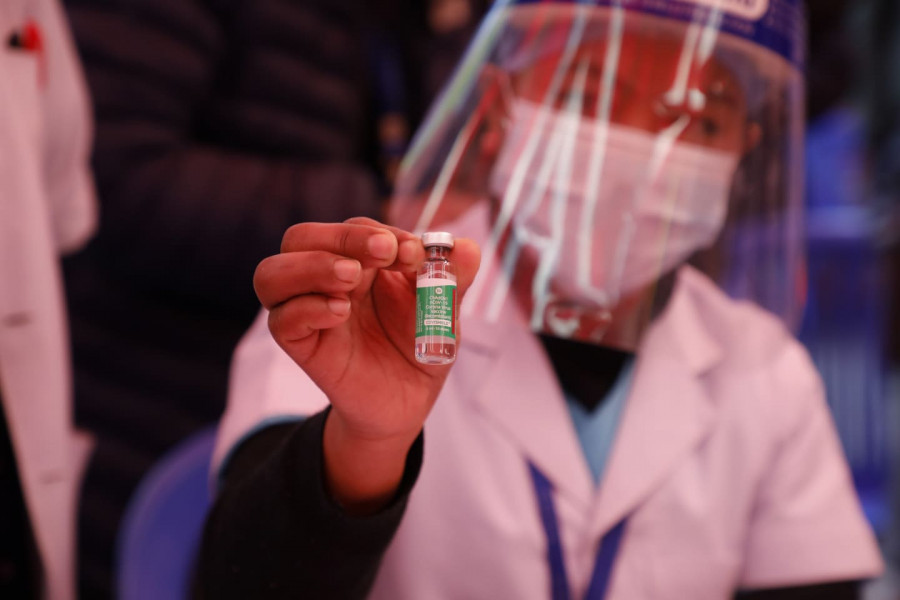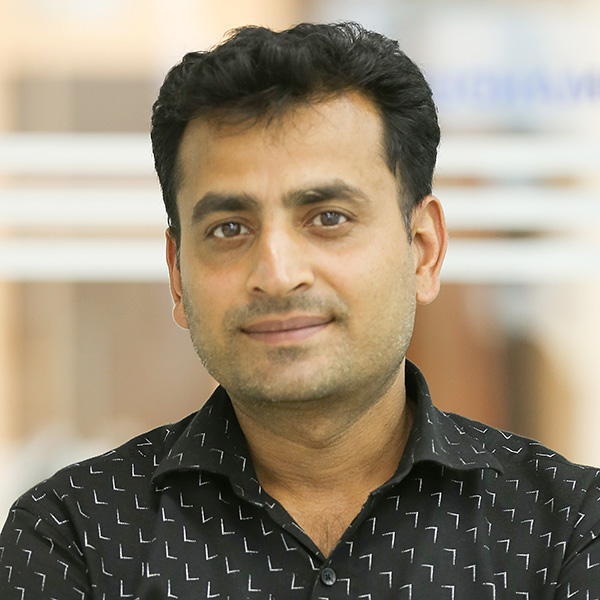Health
Health Ministry mulls inoculating people over 60
Nepal has an existing stock of 700,000 doses and delivery of another million doses is expected in days. As for the second dose, there will be no issues with supply, officials say.
Arjun Poudel
The first round of the second phase of Covid-19 vaccination drive is going to end on Tuesday. With over 1,605,706 number of people vaccinated as of Monday evening, the existing stock of vaccine doses with the government is over 700,000.
Officials now are discussing whether to save the existing doses for those who have already taken the first shot or start immunising the vulnerable group.
“We have to decide whether to save the existing doses for the second shots or start administering the vaccine to the vulnerable population among whom the death rate is high,” said Dr Roshan Pokhrel, chief specialist at the Ministry of Health and Population. “Those who are at high risk will be somehow protected if we could give them the first doses.”
Nepal so far has received 2,348,000 doses of vaccines–1,000,000 doses under grant assistance from India; 1,000,000 doses of the 2,000,000 doses that the government has bought from the Serum Institute of India; and 348,000 doses under the COVAX facility.
During the first phase of the vaccination drive, between January 27 and March 4,438,879 people were vaccinated.
These people have to take the second shots starting from April 20.
The Health Ministry said that 1,166,827 people have taken the jabs until Monday in the second phase of the drive for those above 65.
“As we complete the first round of the second phase of the vaccination drive during which people above 65 years of age are vaccinated, we will be left with around 700,000 doses of vaccine in our stock,” said Pokhrel. “We are expecting 1,000,000 doses, for which we have already paid the Serum Institute of India, to arrive in a few days.”
Government officials are yet to decide whether they should immediately start inoculating the population above 60 years of age.
The second phase of the vaccination drive has encouraged officials, as around 65.5 percent of the target population of 1.78 million have been covered.
“Over 65 percent coverage is not bad, as immunisation is voluntary,” Dr Shyam Raj Upreti, chief of Covid-19 Vaccine Advisory Committee, told the Post. “Authorities should also focus on addressing concerns of people and pay attention to awareness campaigns to take the people into confidence.”
Upreti conceded that thousands of people, who are vulnerable and are at risk of dying of infections, did not receive the vaccine due to various reasons.
Those who are bed-ridden and need assistance to walk could have been deprived of the vaccine, according to officials. Similarly, a lack of easy access to immunisation centres, misinformation about the vaccine and a lack of encouragement from their children and relatives to take the jabs could be other reasons some of the people from the target group did not take the vaccine.
Although the immunisation services were provided from around 5,000 centres, only around 3,300 immunisation centres were run in each day to their full capacity.
Dr Jhalak Gautam, chief of the Child Health Section at the Family Welfare Division under the Department of Health Services, said that projection of the targeted population was made on the basis of the projection of population age groups made by the Central Bureau of Statistics.
“Yes, there is a lot of room to improve. We will try to address our shortcomings,” Gautam told the Post. “The good thing is we haven’t had any untoward incidents from the vaccine so far.”
Concerns now, however, are about the availability of vaccine doses.

Nepal became one of the first countries in the world to launch its vaccination drive against the coronavirus on January 27. But with the Covid-19 vaccine becoming the most sought-after commodities, the government is struggling to procure sufficient doses.
Nepal signed a deal to buy 2 million doses of the Covishield vaccine from the Serum Institute of India, the largest vaccine manufacturer in the world, at $4 per dose in February. The government is working to procure additional 5 million doses at the earliest, but India’s vaccine giant has refused to sell at the same price it sold earlier.
The Health Ministry officials said that they were ready to pay $5.5 for each dose of vaccine but the company still showed reluctance to sell directly to the government and asked to pay additional 10 percent to its agent.
Each dose of vaccine will cost $6. 5 if the government agrees to comply with the vaccine maker’s demand.
Amid this, the government on Sunday decided to let private firms import the coronavirus vaccine and issued a notice to apply.
Public health experts, however, have questioned the decision to allow private companies to import Covid-19 vaccines saying that it is the government that is responsible for saving lives and getting the people immunised against the virus.
“It will be unfortunate if the authorities have decided to involve the private sector and given up their responsibilities,” said Dr Sharad Onta, a public health expert. “Most of the people will be deprived of getting immunised if they have to pay for the vaccine. Neither the purpose of immunisation will serve nor the infection will come under control that way.”
Meanwhile, according to Pokhrel, COVAX facility will supply additional doses before May, which can be used for second doses. The facility has committed to provide enough vaccines for 20 percent of the total population.
Earlier on February 3, the COVAX in its interim distribution forecast declared that the facility would supply 2,256,000 doses to Nepal by the end of the month. However, only 348,000 doses have been supplied as of now.
Officials expect the remaining over 1.9 million doses of the forecast commitment to be delivered before May and therefore there will be no problems for the second dose of vaccine.
“People who took the jabs in the second phase need to be administered a second dose in mid-June,” said Pokhrel, chief specialist at the Health Ministry. “We are planning to procure on our own and the COVAX facility will also supply the vaccines. Therefore we will not have problems for the second dose.”




 9.12°C Kathmandu
9.12°C Kathmandu













%20(1).jpg&w=300&height=200)
